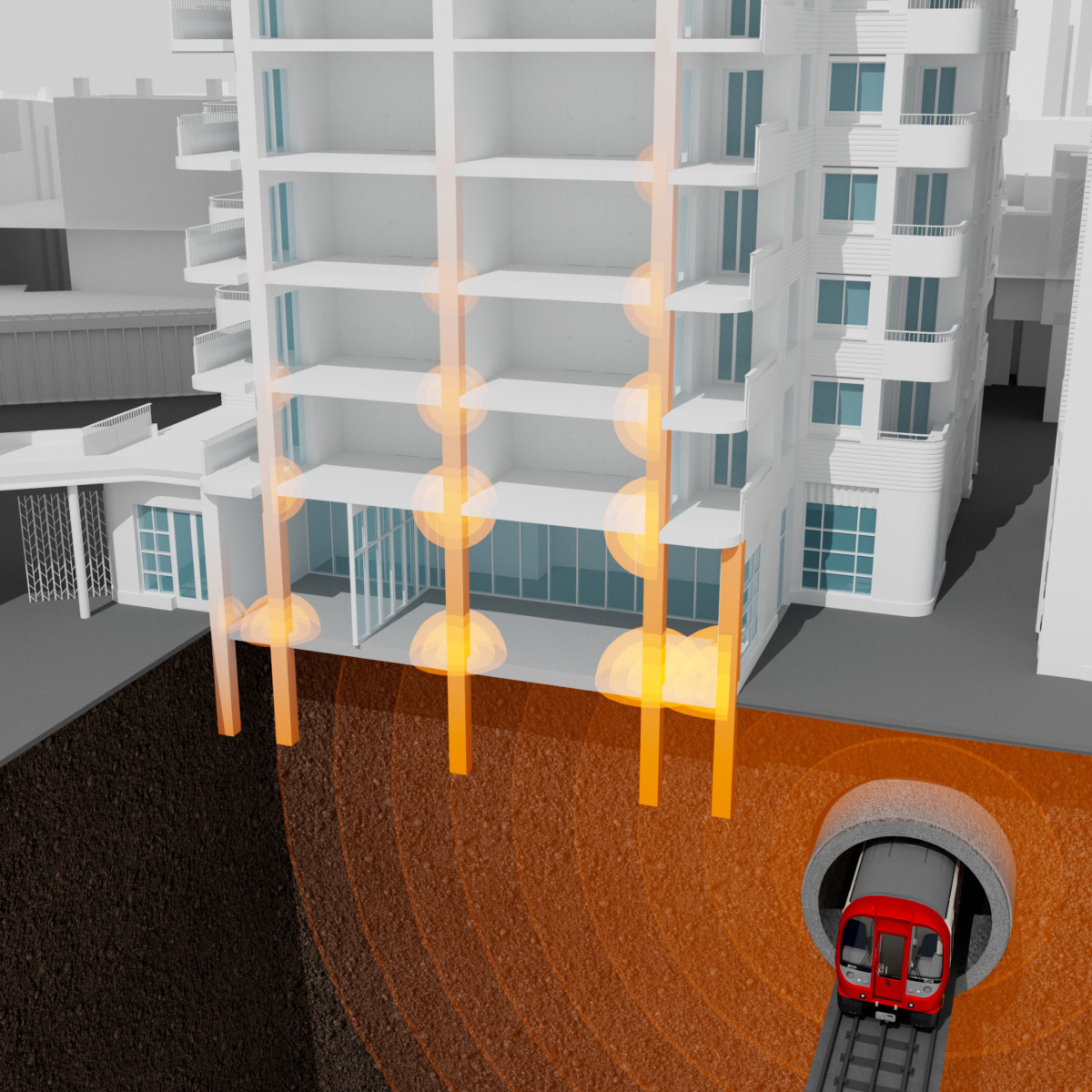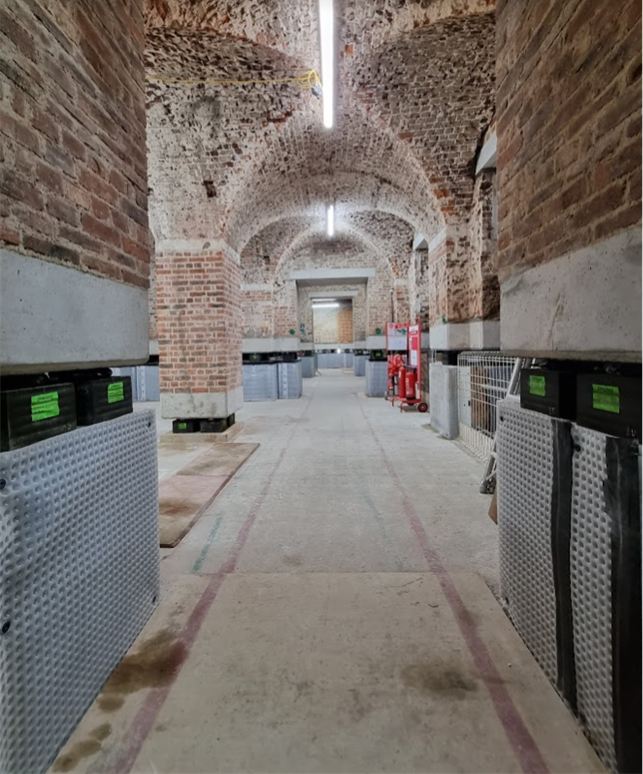Insights
Vibration control in dwellings.
Ground-borne noise.
As part of a strategy to stimulate economic growth, the Government has recently unveiled plans to develop housing on undeveloped land near commuter train stations. Given the scarcity of vacant green spaces in city centres, this initiative will inevitably lead to these developments being situated close to rail infrastructure, where noise and particularly vibration can significantly impact the development.
While feeling vibration is rarely an issue inside buildings located near railway lines or underground rail, the same vibration can cause rumble noise, technically referred to as reradiated or ground-borne noise. This often-overlooked aspect of vibration not only affects the rooms directly adjacent to the trains but also the entire building, as the vibration can freely transmit throughout the building’s structure. It might not be overly loud but is something people do not want when trying to get a good night’s sleep.
What do we mean by ground-borne noise?
Ground-borne noise refers to sound that is transmitted through the ground as vibrations. These vibrations can travel through the earth and enter the building, causing it to be perceived as noise.

For underground rail, when a train passes by, the vibrations from the tracks can travel through the ground and cause the foundations then floors and walls of nearby buildings to vibrate, generating noise that can be heard inside. This contrasts with airborne noise, which travels through the air and is relatively easy to mitigate – a decent window specification can minimise external noise break in. The mitigation for ground-borne noise, however, can be complex, costly, and require additional space. Therefore, it is crucial to consider ground-borne noise from trains at an early stage to ensure that sufficient space is allocated for mitigation.
How do we prevent ground-borne noise?
To mitigate ground-borne noise within a building, the vibration transmission path needs to be interrupted. Several methods can achieve this, but the following are the most common:
- Isolation of the track at source, although this can be difficult on existing railways.
- Total building isolation – isolating the building from the ground using elastomeric or spring bearings.
- Localized isolation of dwellings or rooms through independent wall, floor, and ceiling linings within the building where ground-borne noise is a concern.
- Disrupting the transmission path through the ground – for surface level trains, the introduction of a trench between the railway and building can be enough to reduce vibration levels.
Each of these measures requires careful consideration of the frequency of noise that needs to be mitigated. Additionally, coordination with all building services (e.g., ventilation ductwork, drainage pipes, etc.) is essential to ensure that these services do not compromise the independence provided by the mitigation.
At Hoare Lea, we are experts in vibration analysis with a breadth of experience of isolating residential buildings, from conducting on-site vibration measurements to utilizing finite element modelling to assess ground-borne noise levels throughout the building. These tools enable us to determine appropriate mitigation strategies to ensure that we provide the right environment for people within dwellings.

A prime example of this is the vibration isolation solution for Cambridge House in Mayfair, London. Slicing an existing and near 300-year-old listed building and inserting elastomeric bearings to minimise the rumbling noise of underground train tunnels. In fact, we were delighted that the judging panel at the ANC Acoustics Awards 2024 agreed that it was special and worthy of recognition.
If you are interested in exploring how we can assist you in assessing and mitigating noise and vibration, please do not hesitate to contact us.
